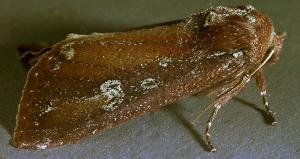|
Zebra Caterpillar |
|||||||||
Contents Fact Sheet (requires Acrobat Reader 3.x or above to read and print. Click below to download the free "Reader".) |
This section contains information on the management of zebra caterpillar in peppermint. The Fact Sheet contains specific information on identifcation and biology of this pest (requires Acrobat Reader). Zebra caterpillar often occurs about the same time as variegated cutworm and other foliage feeding cutworms and armyworms. Refer to information on variegated cutworm for information on management of zebra caterpillar and other cutworms and armyworms.
|



